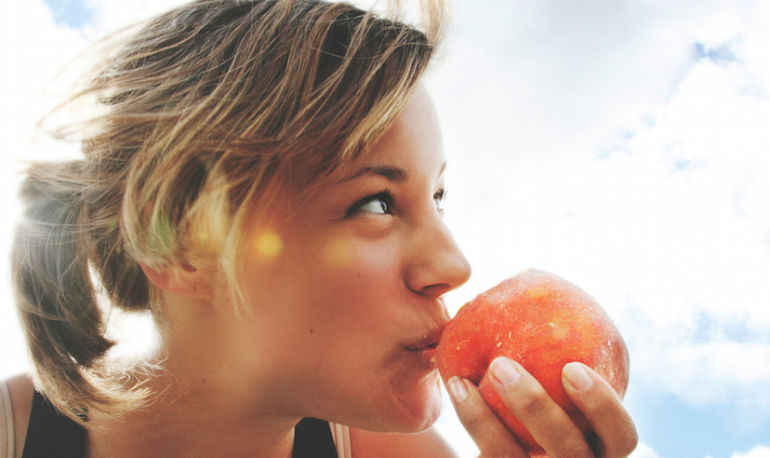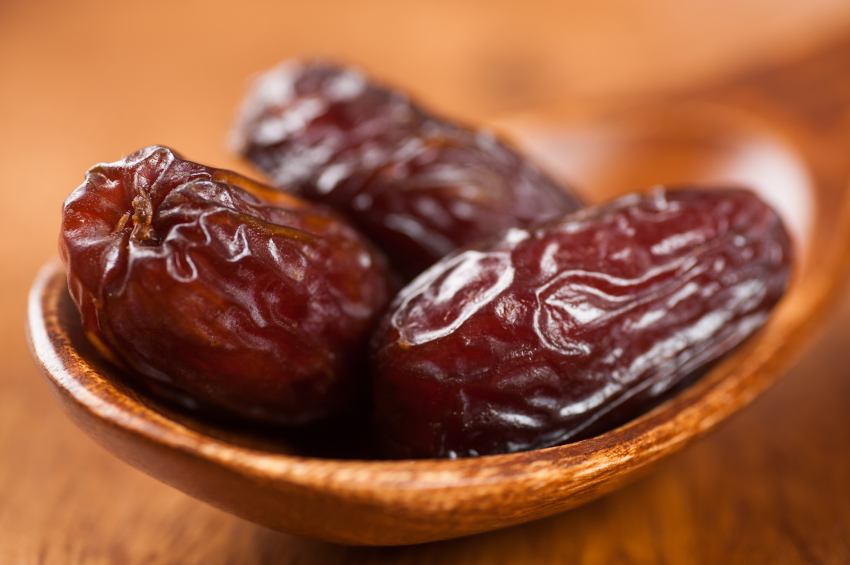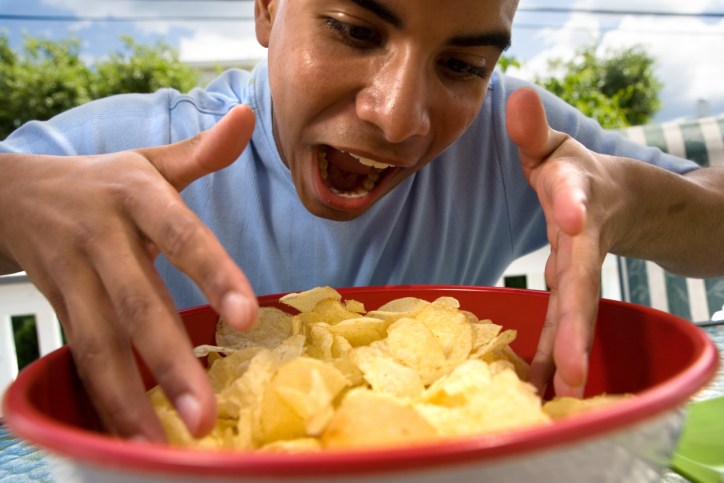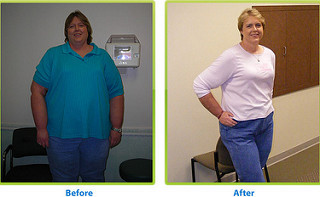The 4 Food Rules I Give My Patients For Healthy Weight Loss

Jamé Heskett, MD, is a New York City–based doctor with a focus on holistic women's health and anti-aging. In this adapted excerpt from her new book, The Well Path: Lose 20 Pounds, Reverse the Aging Process, Change Your Life, Dr. Heskett explains how to make nutrition and weight loss easy by sticking to just four simple food guidelines.
As doctors, we learn to work with what’s realistic for our patients. A successful, sustainable weight-loss plan has to acknowledge that we are different and that one size does not fit all. I could have 10 women come into my practice all wanting to lose 20 pounds, and each one of them would leave with different eating recommendations. You can’t tell a woman who’s grown up eating bacon that she has to give it up forever. In fact, the second you tell her that, she will probably just go eat a bacon-wrapped bacon burger with a side of bacon.
A program has to be carefully designed to be flexible enough to accommodate your individuality so that you can sustain success for the rest of your life. What works for all women is making an effort to nutrify the composition of every meal.
That’s why I recommend keeping things simple by focusing on the "Four F’s" of nutrition: fruit, fat, fiber, and fuel. Add them to every meal, and your favorite meals will help you, not hurt you.
1. Fruit
Fruit is one of nature’s gifts. It’s the perfect source of glucose, a substance you need to grow and rebuild muscles and to feed your carb-loving brain. All varieties of fruit are full of antioxidants that help sweep away accumulated oxidation rust and reduce inflammation that can cause diseases.
Fruit also tastes great and has plenty of fiber. The darker the berry, or the more intense the color, the more nutrients it has to offer. Eat little bits of fruit, ideally locally grown and seasonal, throughout the day to replenish your body with its cornucopia of nutrients.
2. Fats
There’s been a lot of controversy surrounding fat over the past decade. Butter is the bad guy — or is it? Olive oil’s a hero, but coconut oil’s better? It's hard to keep up with the information on fat!
So let’s start with something concrete: eating fat does not make you fat. Fat is crucial for your cells to function optimally. Your body can’t thrive without it. And it's important to eat some fat at every meal.
Now, some fats are bad for you. Trans fats found in red meat, cheese, ice cream, margarine, and processed foods such as cookies and crackers raise LDL, aka bad cholesterol, the stuff that forms plaque in your arteries and leads to heart disease, and decrease HDL, aka good cholesterol, the stuff that chips away at the plaque to clear your vessels.
Other fats support your health, such as essential fatty acids (EFAs). Your body can’t make these fats on its own, but it needs them to survive. Omega-3s and omega-6s are the key EFAs. It’s important to balance your omega-3s with your omega-6s, though. Americans tend to eat a preponderance of omega-6s (corn oil, potatoes, poultry, grains), so it’s important to add omega-3s (nuts, vegetables, fish, legumes) to your diet.
Consuming balanced EFAs decreases your risk for heart disease, lowers cholesterol, and improves metabolism, cognitive function, and digestion. When I balanced my EFAs years ago, the first thing I noticed was an improvement in my skin.
3. Fiber
Remember back in the ’70s, when Americans were thin and no one seemed to have cellulite? The health craze back then was bran, aka plant fiber. Plant fiber is nature’s intestinal scrub brush. It cleans your intestines of sludge that prevents your gut from absorbing nutrients to pass along to cells. Fiber slows down your digestion, giving you more time to absorb nutrients. In essence, it makes you feel fuller longer by balancing hunger hormones.
The average American’s fiber intake is about half of what it should be. We should eat 25 to 30 grams per day; most Americans eat half, or 15 grams. Our diet is high in meat and processed food, both of which contain little fiber. Grains have gotten a bad reputation because of gluten and carbs; vegetables are too often relegated to a small corner of the plate. I advise adding diverse types of fiber to your meals so that your body gets it from as many sources as possible.
For optimal health, you should incorporate both soluble- and insoluble-fiber foods into your diet. What’s the difference? Soluble-fiber foods dissolve in water in the intestines and are digested slowly for maximum absorption. Insoluble-fiber foods do not dissolve in intestinal water. They speed up bowel movement, prevent constipation, and ultimately lower the risk of heart disease.
An increase of only 10 grams of fiber per day will help you to feel fuller and will prevent hunger pangs.
Soluble-fiber foods
Berries: blueberries, blackberries, strawberries
Grains: oatmeal, millet, farro, spelt
Hard fruit: apples, pears
Legumes: beans, lentils, peas
Nuts: almonds, cashews, walnuts
Seeds: popcorn, flax, chia, pumpkin
Insoluble-fiber foods
Grains: whole-grain bread, quinoa, brown rice, couscous
Vegetables: carrots, celery, zucchini, broccoli, cauliflower, beets, Brussels sprouts, dark Swiss chard, kale, artichokes, sweet potatoes, russet potatoes
4. Fuel
By fuel, I mean protein. OK, so protein starts with a P not an F. (Should we call it frotein?) Protein is the fuel your body needs to build muscle.
How much protein is enough? If you’re strength-training regularly, you need about 1 to 1½ grams of protein per kilogram of body weight. A kilogram is equal to 2.2 pounds, so a 130-pound woman would benefit from eating 60 to 90 grams of protein a day. If your exercise is particularly intense, your protein needs would be in the upper range.
But it’s a misconception that you need animals for protein. You can actually get all of your essential proteins from a plant-based diet, if you prefer to eat that way. Along with the protein, you get a million other benefits from eating plants that you can’t get from meat. Two great examples are quinoa and Brussels sprouts.
A lot of people think that meat is 100 percent protein. Not so! Per the USDA Nutrition Database, beef is 26 percent protein. Eggs? Only 12 percent. You can get a better bang for your protein buck from many vegetable sources, which are also high in fiber and micronutrients. Here are a few:
- Spinach: 49 percent
- Kale: 45 percent
- Broccoli: 45 percent
- Cauliflower: 40 percent
- Mushrooms: 38 percent
- Parsley: 34 percent
- Cucumbers: 24 percent
- Peanuts: 24 percent
- Green peppers: 22 percent
- Cabbage: 22 percent
- Almonds: 21 percent
- Sunflower seeds: 21 percent
- Tomatoes: 18 percent
Related reads:
- 11 Food Rules For The Ultimate Anti-Inflammatory Diet
- Why Eating More Fat Can Help You Lose Weight: A Doctor Explains
- 5 Things That Kept Me Motivated On My Weight-Loss Journey (Even When I Wanted To Give Up)
-
Free Quick Weight Loss Program
These days one can find various kinds of weight loss methods, which pr
-
Top Mistakes In Losing Arm Fat And How To Do It Right
Losing arm fat maybe one of the biggest
-
Tips For Healthy And Fast Fat Loss
Moderation is the key to success when it comes to living a healthy lif
-
Get That Diet Monkey Off Your Back
If you want to hang on to your excuses and your excess weight then sto
-
Medical Conditions That Inhibit Weight Loss
Weight loss can be a difficult goal to achieve. Some inhibitors includ
-
Convenience Food Tips
While it would be ideal to make all of our own snacks and meals fr
- DON'T MISS
- Diets and Weight Control Programs
- Low Carb Diet - Weight Loss Benefits
- Are these common habits harming your digestion?
- Safe Drinking Water Without Chemical Additives
- 3 Protein Mistakes Even Healthy Eaters Make
- How Late Is Too Late To Eat?
- Hypothyroidism Can Be Treated Naturally
- Biggest Loser Weight Loss Program- A New Start For Your Weight Loss Journey
- Coris Creations Salmon Burger Atop Veggies
- Lose Five Pounds A Week: Four Simple Diet Tips




